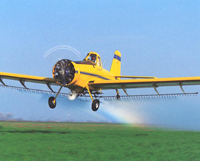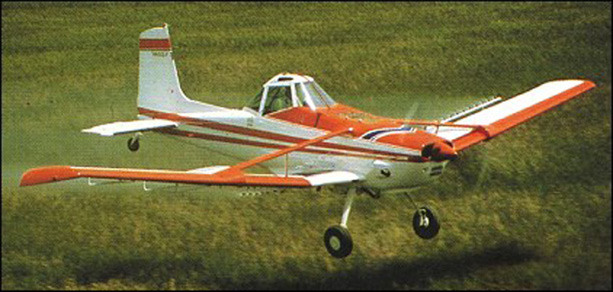As part of the FAA’s National Drone Safety Awareness Week, the National Agricultural Aviation Association (NAAA) is reminding all Unmanned Aircraft System (UAS) operators to be aware of low-altitude agricultural aircraft operations.

“Agricultural aviators fly as low as 10 feet off the ground, at speeds up to 140 mph when making an application, meaning they share this low-altitude airspace with UAS,” said Andrew Moore, Chief Executive Officer of NAAA. “Aerial applications are labor intensive. Ag pilots are looking for ground-affixed obstacles and trying to ensure precise, targeted applications, and studies have shown it is extremely difficult, if not impossible, for manned aircraft pilots to see small UAS. We encourage both professional and hobbyist UAS operators to be mindful of this, especially when operating in rural areas.”
To ensure the safety of low-altitude manned aircraft, NAAA recommends UAS operators:
- Always give the right-of-way to a manned aircraft. It’s the law.
- Equip drones with tracking technology, such as ADS-B, so other similarly equipped aircraft can ascertain their positions.
- Get certified and well-trained in operating a UAS.
- Contact local agricultural aviation operations before flying by consulting AgAviation.org/findapplicator.
- Equip UASs with visible strobe lights.
- Land your UAS immediately when a low-altitude manned aircraft is nearby.
- Carry UAS liability insurance.
In a test conducted by the Colorado Agricultural Aviation Association and other stakeholders, including manned and unmanned aircraft organizations, no pilot operating a manned aircraft could continuously visually track a 28-inch-wide drone when flying at regular speeds. While they might be spotted for a second, UASs are not constantly visible to pilots, meaning it’s up to the drone operator to avoid a collision. When birds hit an ag aircraft, they can break through an aircraft’s windshield causing deadly accidents.
Furthermore, a study conducted by the Alliance for System Safety of UAS through Research Excellence (ASSURE) showed UAS collisions with aircraft cause more damage than would a bird strike of similar size, due partially to UASs’ dense motors and batteries, as opposed to a bird made mostly of water, feathers, hollow bones and sinew.
While a majority of aerial applications take place in the summer months, aerial applicators continue to work throughout the year applying cover crops, fighting fires and making public health applications that control health-threatening pests such as mosquitos that spread the West Nile, Zika and EEE viruses.
Aerial applicators treat 127 million acres of cropland annually, which means many flights over many different areas during the busy season. Be aware of agricultural and other low-flying manned aircraft this week and throughout the year. Learn more at AgAviation.org, Thinkbeforeyoulaunch.com and Knowbeforeyoufly.org.



